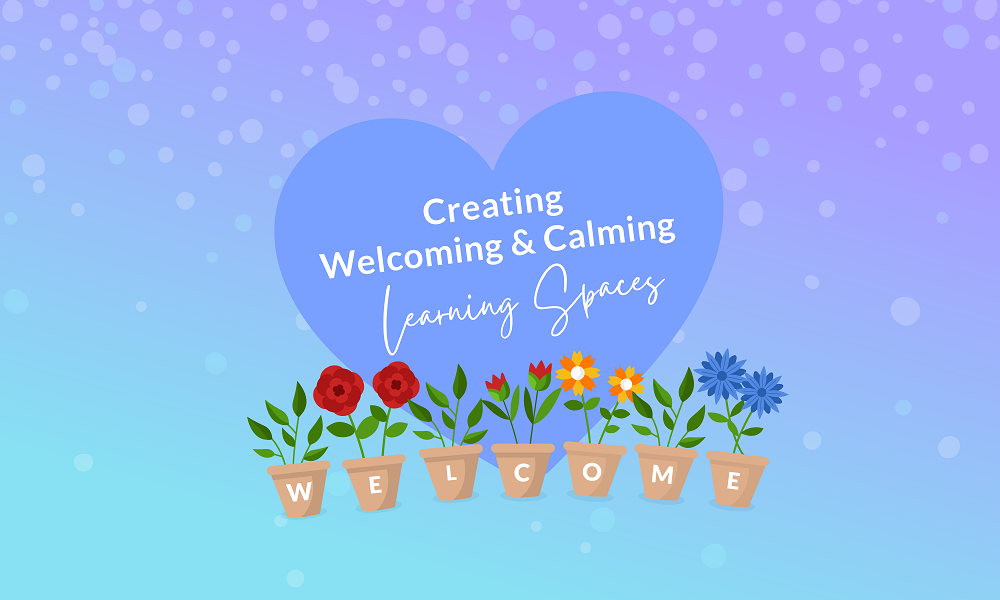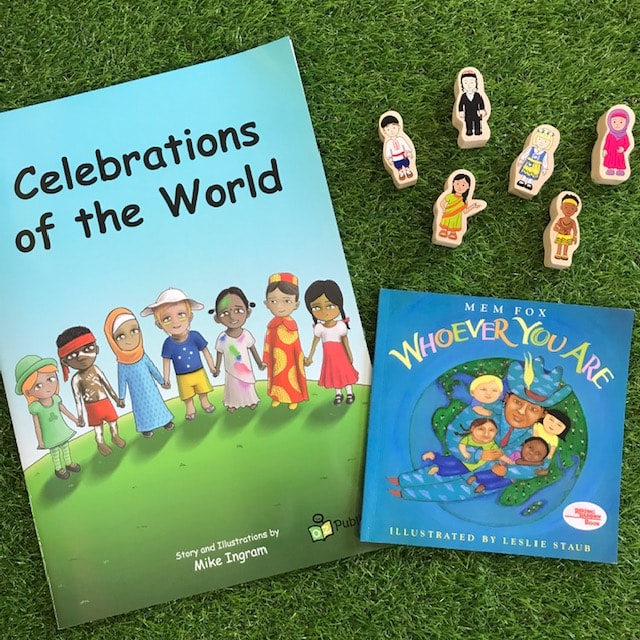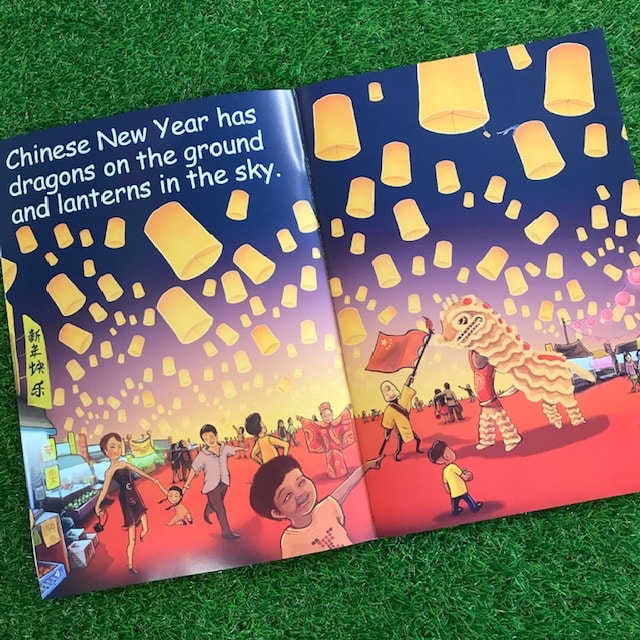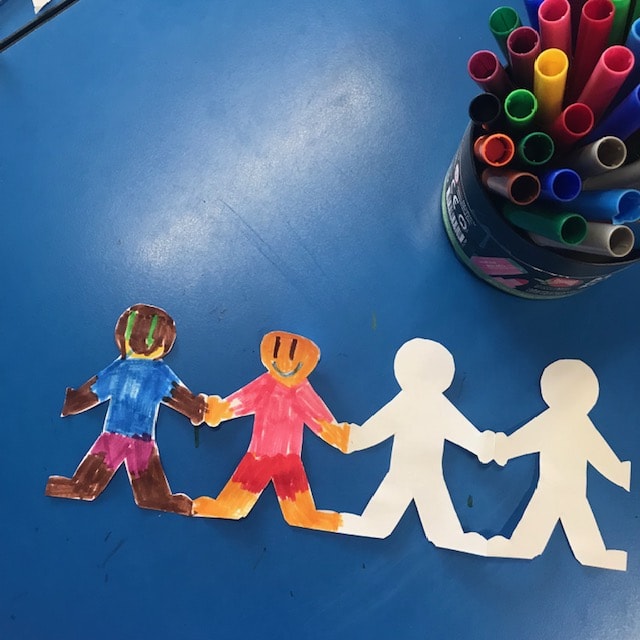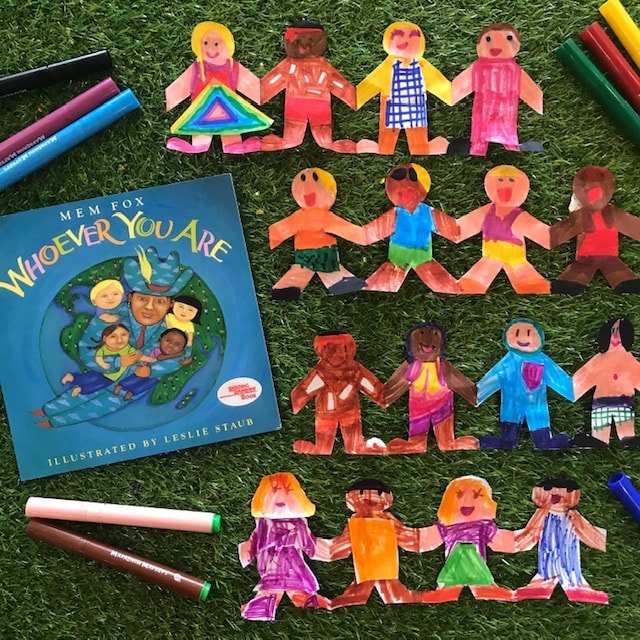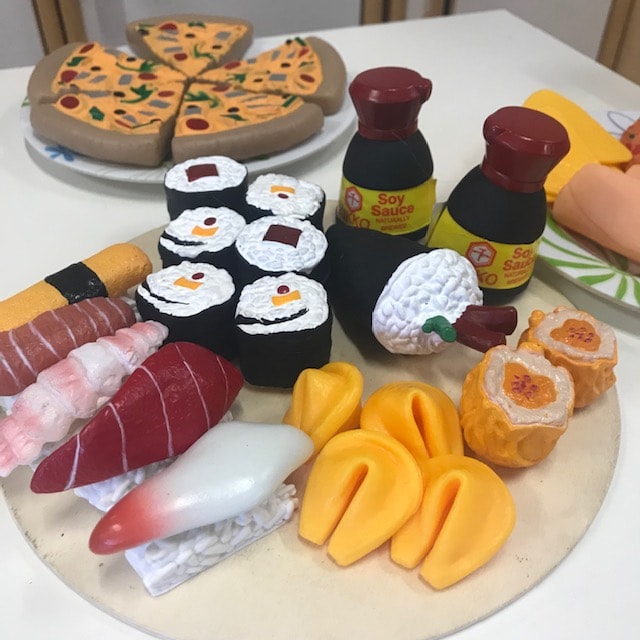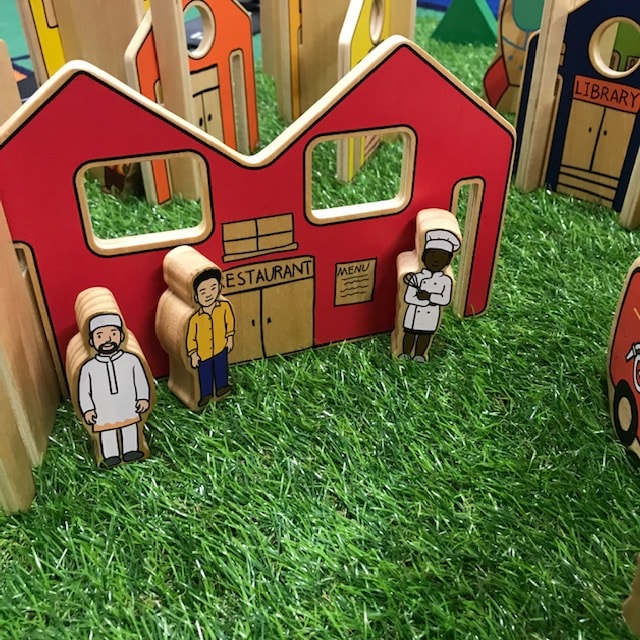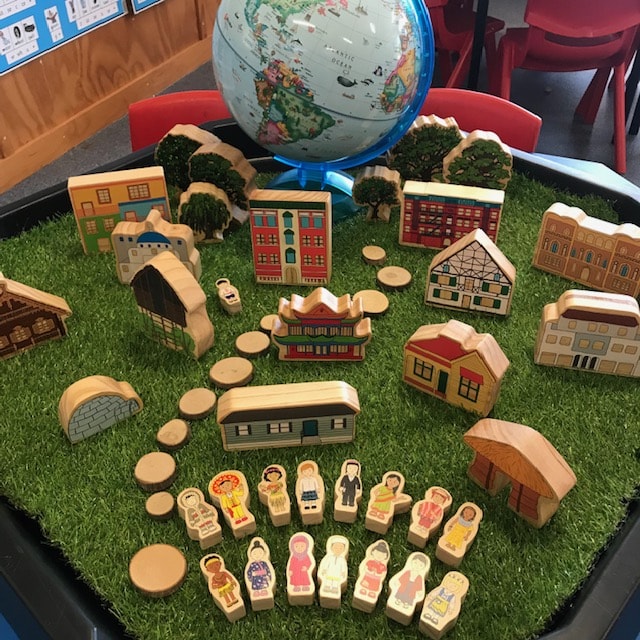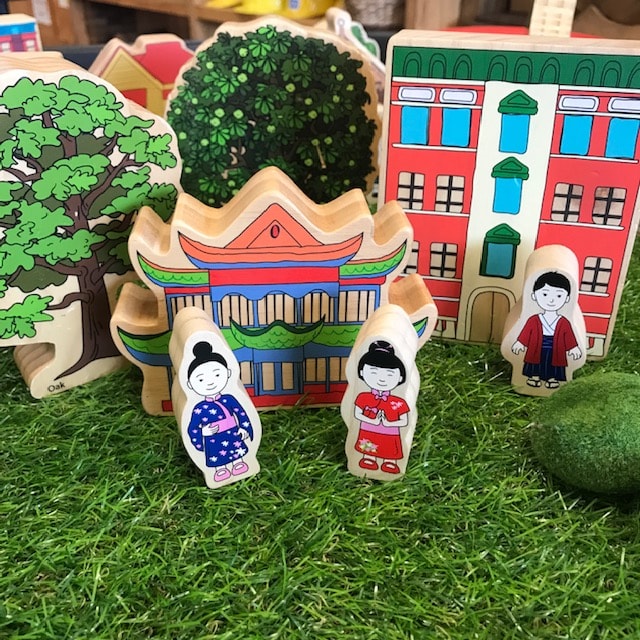A positive, nourished mindset is so important to keep the energy high all year round. Our goal is to support and nurture educators when the physical and emotional demands of day-to-day tasks and experiences exceed the amount of energy available! (Over a long period of time, this can lead to feeling overwhelmed and drained.)
In this piece, we’ll look at valuable ways in which learning spaces can be shaped to support and respond to children’s and families’ needs. This ensures everyone feels safe, connected and comfortable in the setting, including all the great educators out there worth their weight in gold!
Comfy & Cosy Spaces
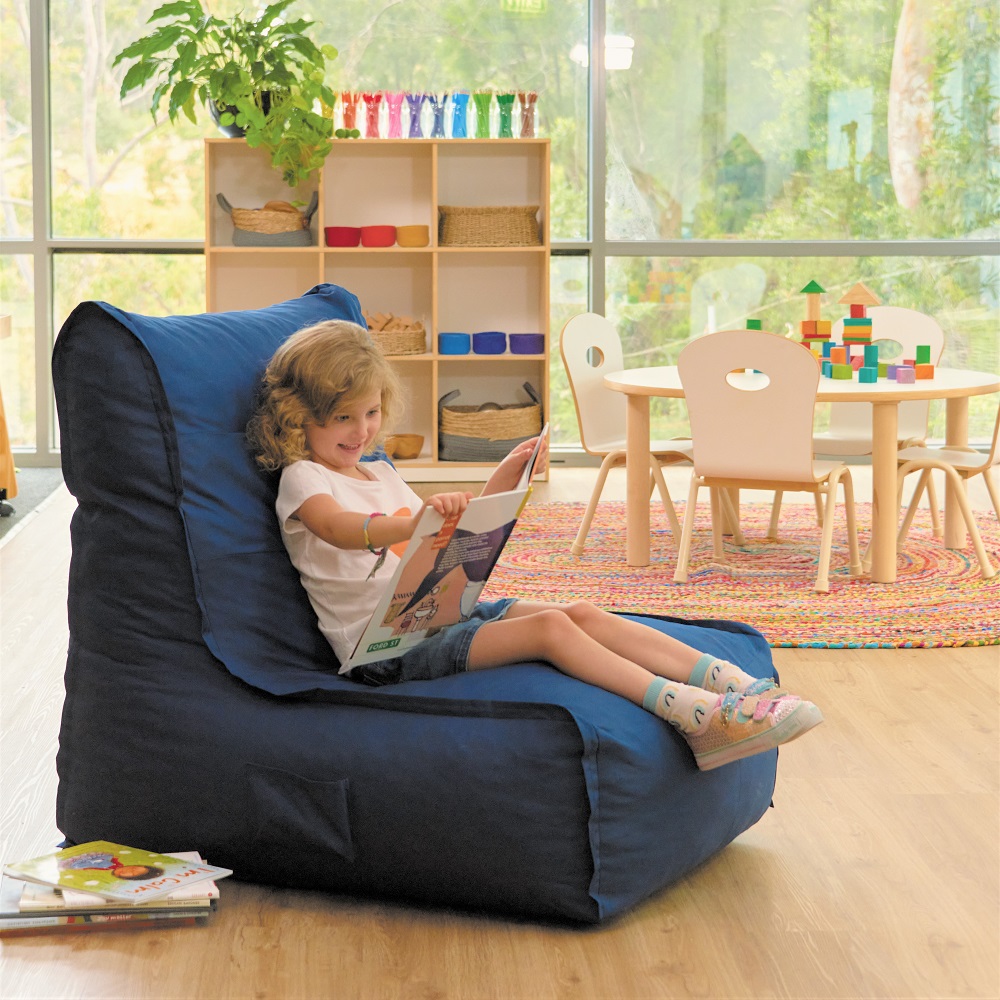
Soft furnishings ensure children have access to a comfortable learning environment and can include anything from rugs and carpets to cushions, canopies, netting, fabrics and more!
Soft furnishings can transform a loud and busy learning environment by absorbing noise and helping to create pockets of calm where children can, for example, snuggle into a big cushion to read a book, or lie down and have a rest in a cosy and comfy spot. Soft furnishings can modify a rustic cubby house into an inviting and comfortable cave or create a welcoming area for the class to sit together to yarn, share stories and plan out the day’s events.
Featured Product:
MTA Spaces – Navy Foam-Filled Lounger
Calming & Reflective Spaces
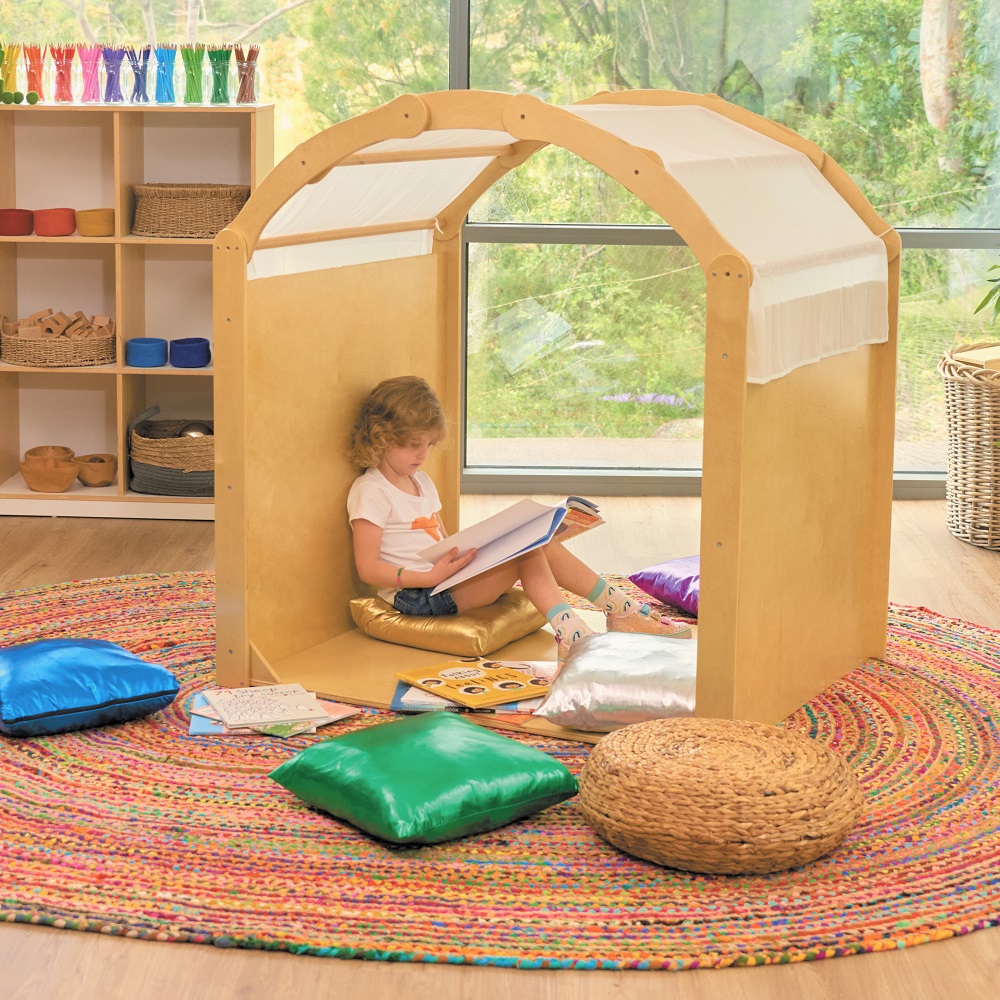
Calming and reflective spaces offer a peaceful learning setting in which children can embrace quiet. Here, children can spend time relaxing and reflecting away from the hustle and bustle of a busy classroom.
Cushions, fabrics, tents and dens can all contribute to quiet and reflective spaces, making cosy and comfortable spots for children to explore and make their own.
Combine these spaces with books, puzzles, soft toys, tea parties or anything else that children would like to add to their retreat. A calming and reflective space can be just the thing to refuel children’s energy.
Featured Product:
Stockholm Spaces – Cosy Retreat
Spaces of Belonging
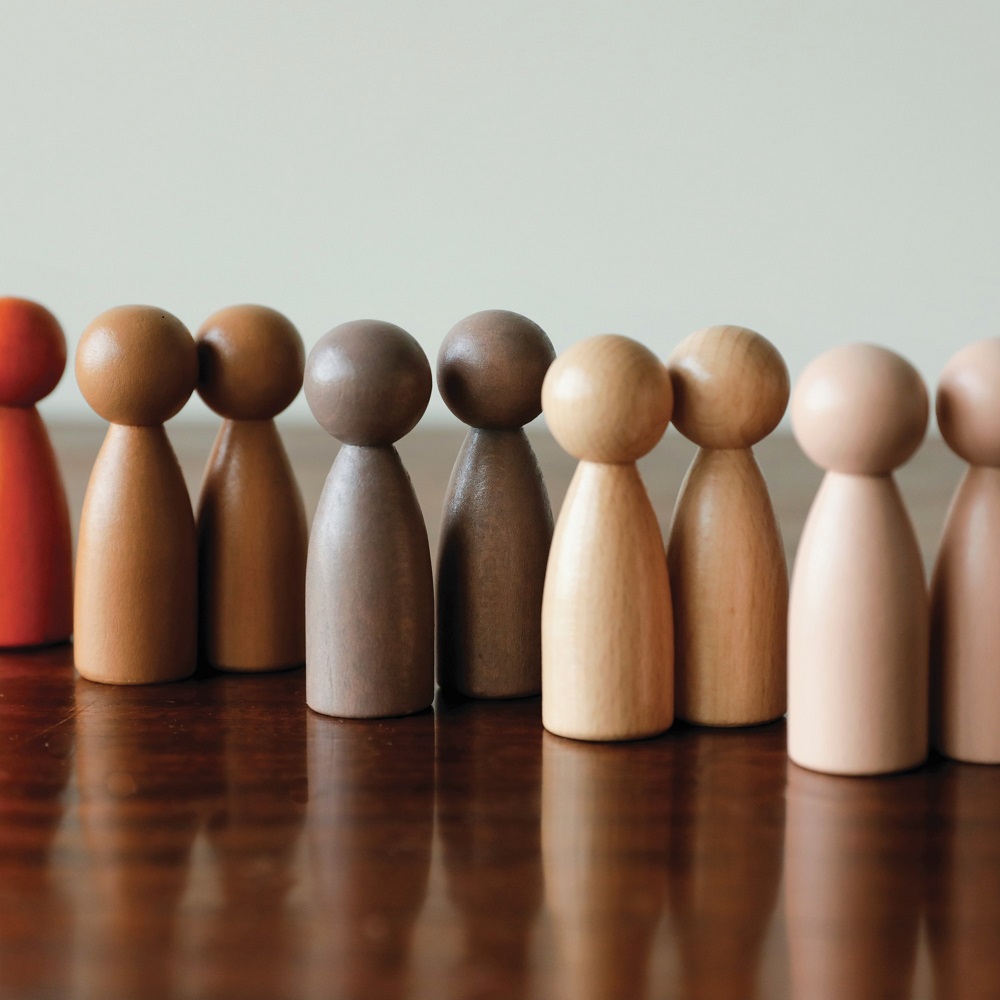
The way children and their families are welcomed into the learning environment makes an incredible difference to their sense of belonging. Belonging is all about feeling connected and secure, valued and accepted with the community’s people and place. A deep sense of belonging ensures the emotional wellbeing of children and their families can thrive, including their self-worth, confidence, capability and adaptability, to name a few.
Feeling secure and connected within their social and physical learning environments will also ensure that these settings become places of safety and refuge for children and families to work through the challenges and difficulties they might be experiencing.
Educators are in an excellent position to build a sense of belonging, not only with their words and actions but also with the physical settings too. Seeing welcoming resources such as wall hangings or displays or children’s names on parent communication pockets will invite families into the settings. Classroom journals will also empower children and their families to contribute to the program and the day’s happenings.
A place where everyone belongs.
Featured Product:
Mindful Spaces
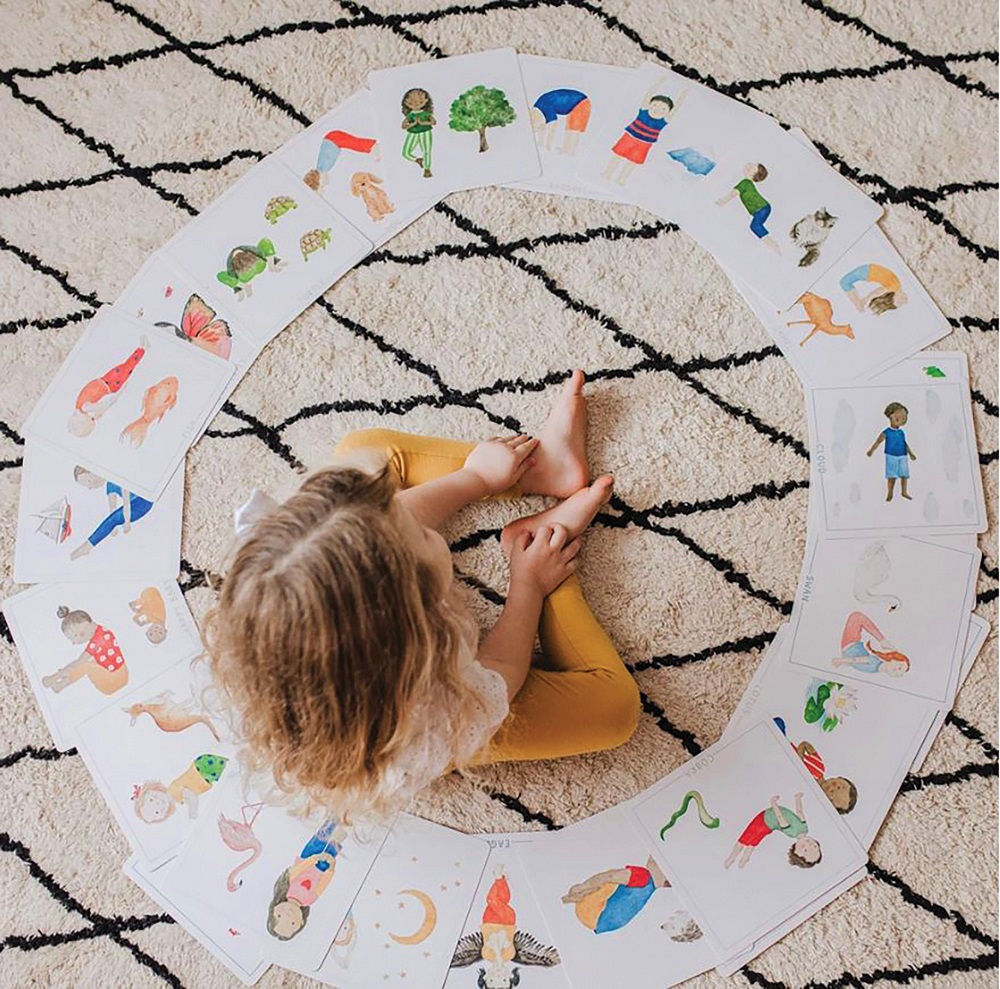
Affirmations, mindfulness and restful breathing activities, including yoga, can all help ‘cultivate calm’ while fostering a peaceful and positive mindset. Creating a daily ritual with affirmations and yoga
or meditation and breathing will empower young children to nurture their self-awareness, set positive intentions and work through emotional regulation in healthy and helpful ways.
Focusing on gratitude – the feeling of appreciation – is also a powerful way to see the silver lining when everything seems gloomy. These Positive Mindset Affirmation Cards and I Am Me Affirmation Cards can enable the building of confidence, resilience and self-esteem by helping children to find the sunny side of any situation.
Featured Product:
Mindful & Co Kids Yoga Flash Cards
Engaging & Inspiring Spaces
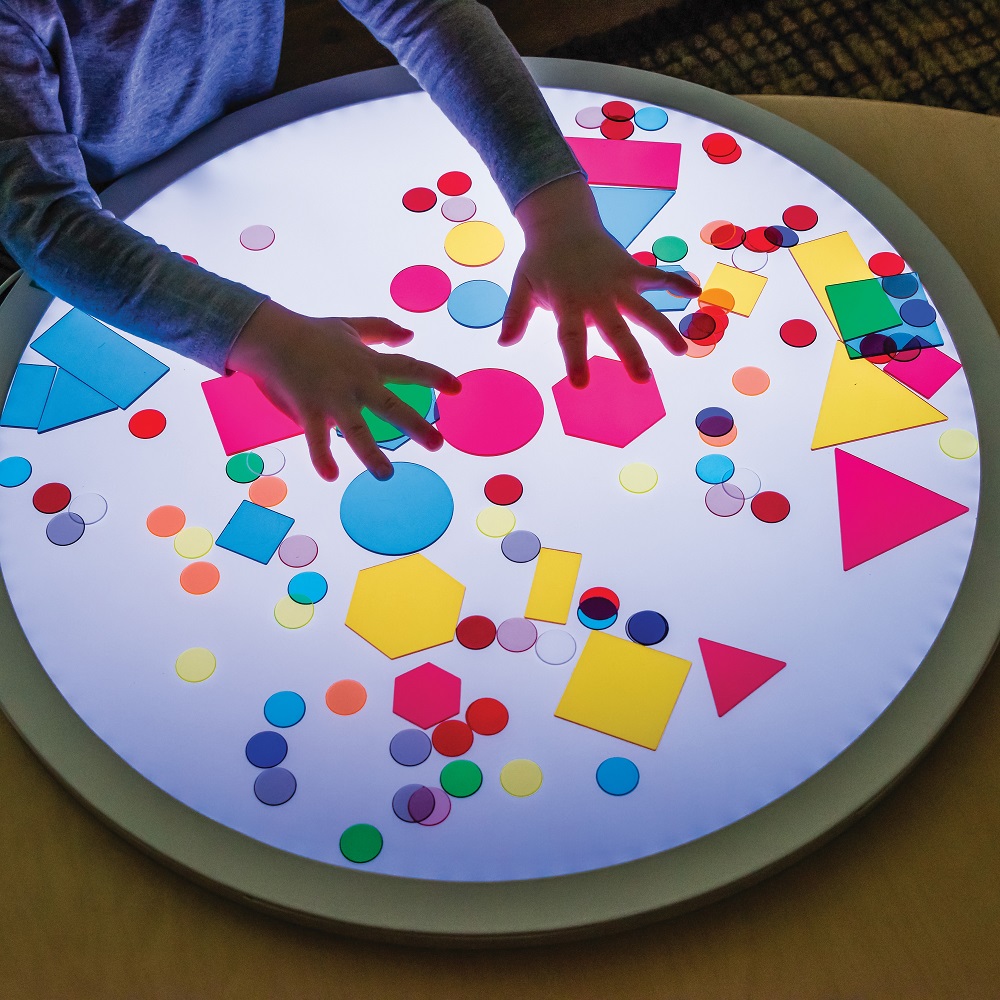
It’s hard to feel motivated when you’re burnt out.
Refreshing your learning environment with a new and exciting project can go a long way in helping to reignite energy and enthusiasm. Light boxes and panels along with light box resources are wonderful tools to drive children’s motivation to explore and investigate with energy and enthusiasm. They light up the room in the most magical of ways, in turn bringing delight and wonder to learning curriculums.
Creating an engaging and inspiring learning environment ensures everyone wants to come back for more. What will happen today? The possibilities for discovery are endless!
Featured Product:
Stockholm Spaces – Round Table & Light Panel
Culturally Meaningful Spaces
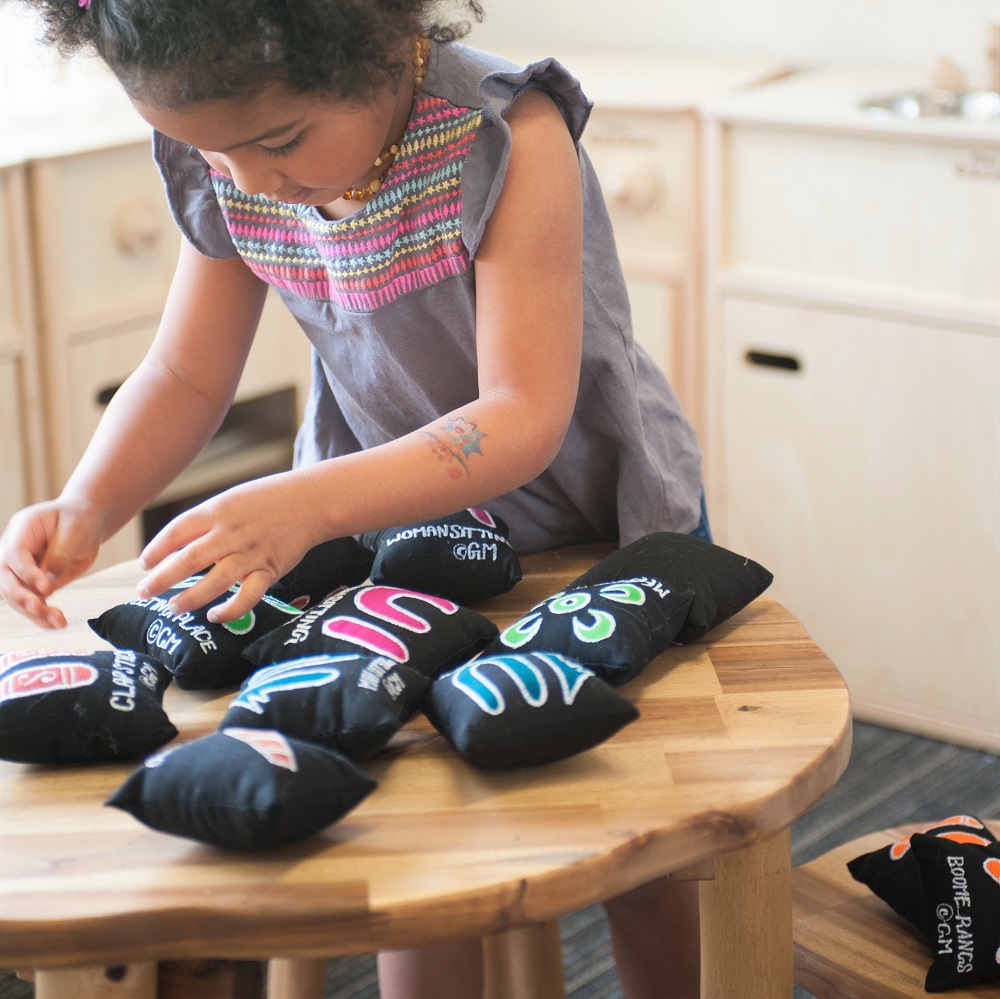
Culturally meaningful curriculums in early childhood settings increase opportunities for its community members to feel connected – a place to feel safe and secure, to feel loved, appreciated and valued. A place to belong.
If you’re thinking, ‘This sounds great, but where do I begin?’, a good starting point is to have a wander through your setting. Does everything in your setting reflect the diverse backgrounds of its community members (the children and their families, the educators and service staff, as well as the wider community at large)?
There’s no end to the items that you can meaningfully interweave throughout your environment. Include dolls, figurines, pretend food, dress-ups and props from around the world. Ensure children’s books portray the diversity of the world’s peoples, perspectives, cultures and abilities in a positive light. Make sure there are truly authentic cultural and Indigenous resources for children to connect with on a daily basis. Invite educators and families to share their cultural backgrounds – learn some keywords and phrases from different languages, learn a song or dance, cook foods from around the world or engage in traditional storytelling.
Featured Product:
Fair Trade Aboriginal Ceremony Matching Game
Purposeful Spaces

Learning spaces that are set up purposefully can bring safety and comfort and a sense of calm to the environment. The physicality of the space (the size, furniture placement etc.) communicates what is to happen, providing clear boundaries and fostering behaviours of motivated and engaged learners. Create breakaway areas, book corners and home corners or simply direct foot traffic in safe and effective ways.
How can a purposeful space be created? It might be through using non-fixed furniture pieces that can be easily moved around the room to create and define predictable play spaces. Open-backed shelving also acts as a barrier while allowing for maximum supervision. Rugs and carpets define a learning space, while the number of chairs, cushions and pillows communicate how many children the area is suitable for at any one time.
The resources chosen to join the space will also encourage positive behaviours. Organised and uncluttered spaces with a considered selection of materials will invite children to develop their skills and interests while interacting in positive ways and achieving learning goals.
Featured Product:
Stockholm Spaces – Circular Low Table
Creative Spaces
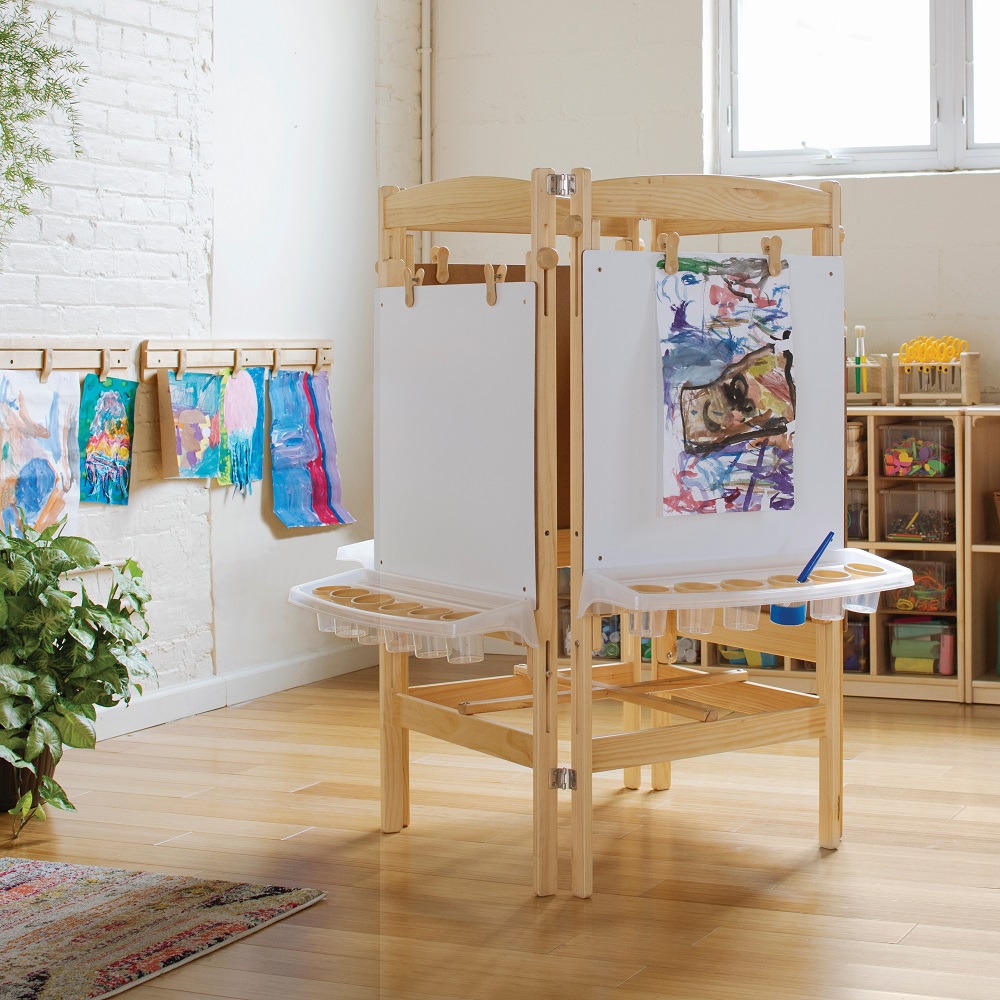
With all those big feelings and emotions children are experiencing, spaces in which children can express themselves with art become even more important. The creative and expressive arts (including painting and drawing, dance, drama, music and movement) all allow children to work through their feelings and emotions by creatively expressing themselves, which is especially important when the words can’t be found.
Providing a space that includes a wide variety of creative materials ensures children have endless opportunities to process what’s happening in their world and come to terms with their experiences. A space where children’s voices and perspectives are seen and heard.
Creative spaces aren’t just for children though! A selection of art materials in the staff room can provide a creative strategy for educators to relieve stress. Drawing or colouring-in for adults can help boost positive feelings or simply take your mind off things.
Featured Product:
Storytelling Spaces
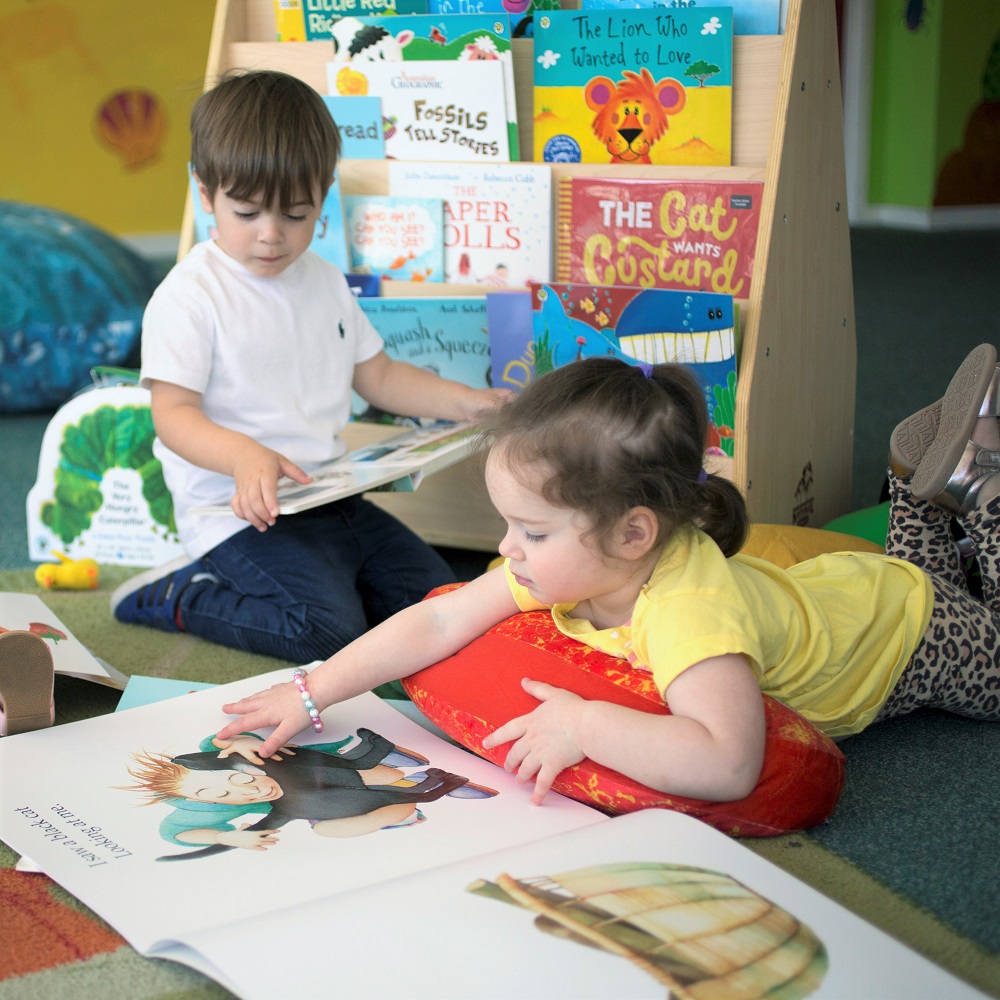
Grab a comfy cushion – it’s storytime!
Books that gently and sensitively capture the lived experience of lockdown, such as While We Can’t Hug, Share Your Rainbow and Windows are invaluable in helping children make sense of an ever-changing ‘new normal’ during the current pandemic. The Fun & Humour Book Pack is guaranteed to make children laugh with continuous joy and entertainment, while the Emotional Development Book Pack celebrates some important milestones in young children’s emotional development with just the right touch of imagination.
Whether it’s everyday shared reading with the Big Books Mixed Carton or storybooks that delve into specific topics, books are a powerful way for children to explore and process their feelings and emotions, supporting and empowering them to identify and articulate the things they are experiencing.
Multigenerational Spaces
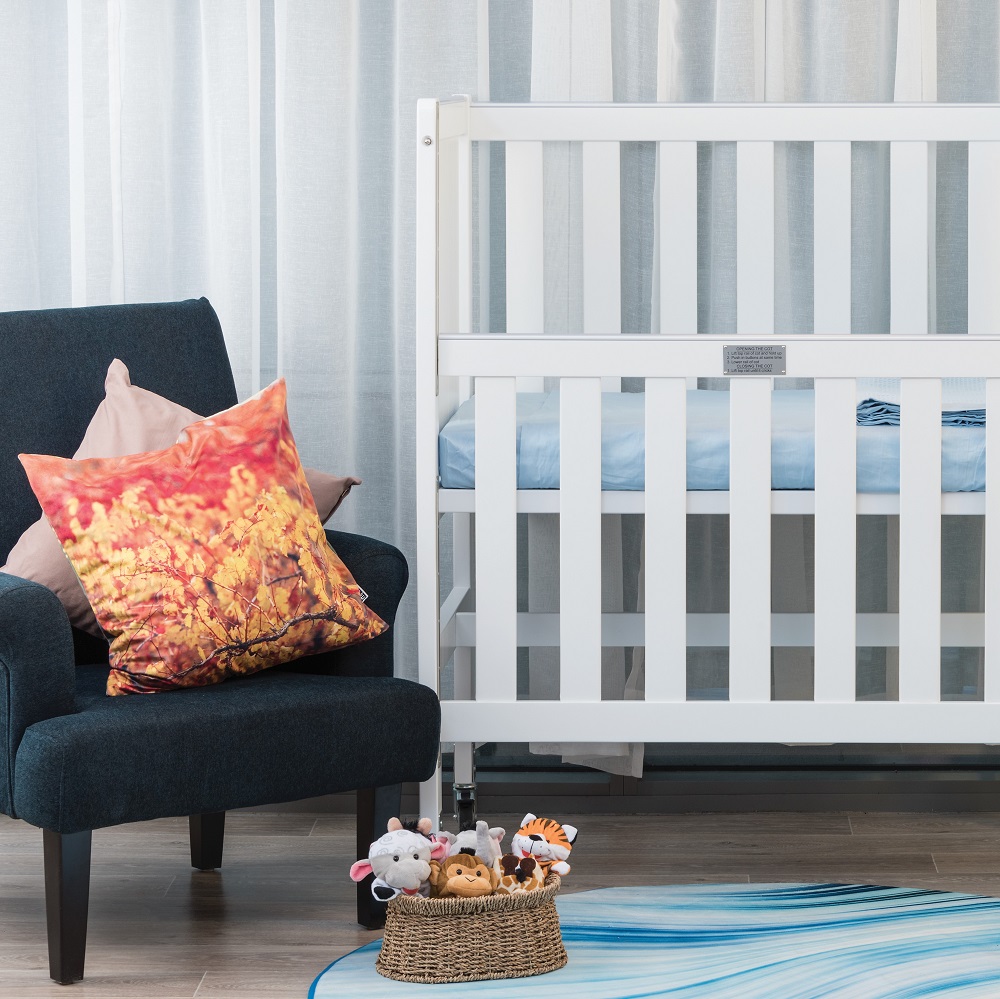
Adult-sized furniture pieces ensure educators have places to sit safely and comfortably throughout the day, as well as provide welcoming statements for families to participate. Whether it’s reading a story from the Intergenerational Shared Reading Pack or providing a space for carers to feed their little ones before setting off, adult-sized armchairs, sofas, chairs and cushions will ensure a homelike setting where all the members of the learning community feel comfortable and welcome.
Featured Product:
Aalto – Full-Size High Back Armchair
A well thought out learning environment has the power to support the wellbeing of children & their families – and educators too! It can encourage exploration, enquiry and discovery – and can include open spaces to move about, cosy nooks to hide away and everything in between. It can respond to individuals needs and interests, provide stimulation and excitement, security and comfort, demonstrate cultural diversity and perhaps most importantly- a deep sense of belonging for all.
Thanks for joining us over here at the Modern Teaching Blog today!
About the Author
Penny Groen is an Early Childhood Teacher who has been working in Early Childhood Education and Care settings around Sydney for 17 years. She has a passion for working in meaningful partnerships with families and communities, providing a responsive and engaging curriculum where everyone feels welcome to contribute. You can see Penny’s interest in the natural world with all the weird and wonderful experiments growing both inside and outside the classroom. Penny is also known for equipping children with the tools to explore their interests and celebrate the discoveries each day brings.

